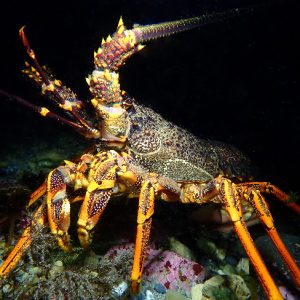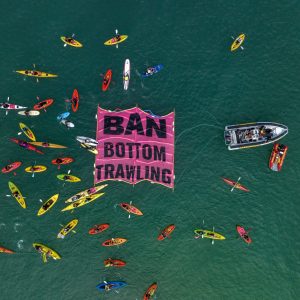Stuart Nash, Minister of Fisheries, has decided not to close the crayfish fishery between the Hauraki Gulf and Bay of Plenty, known as the CRA 2 region. Instead, annual catch limits for commercial and recreational fishers were reduced as of April 1st.
The new Total Allowable Commercial Catch has been reduced from 200 to 80 tonnes, the overall recreational allowance has been reduced from 140 to 34 tonnes and the customary allowance remains at 16.5 tonnes. These limits have been uncatchable for some time. A review of fishing regulations is planned for later in the year and could include options for a reduced recreational daily bag limit and pot limits to control commercial fishing effort.

LegaSea acknowledges the fishery must come first so we cautiously welcome Nash’s decision. However, there is a concern that even this decision may not be enough to restore abundance if recruitment remains at its current, historically low level. Recruitment is the number of young crayfish that grow to legal size during the year. Currently this is at an all time low.
In contrast, there is graphic evidence amassed over 20 years demonstrating a blasé management approach that has enabled commercial effort to double, leading to the collapse of CRA 2.
The recent crayfish survey showed that 39% of respondents supported an 80 tonne commercial fishery, and 42% wanted the Minister to close CRA 2 to all fishing for a time.
While closure was an option given the dire state of the fishery, there was clearly no political appetite or support for Nash to be that bold.
The other factor is that crayfish management relies on commercial data gathering.
It is no wonder that that the public is losing faith in the Quota Management System when one of our most valuable and researched fisheries is on the brink of collapse, yet it has to stay open to commercial exploitation because there is no way to gather independent data.
Our New Zealand Sport Fishing Council fisheries submissions have consistently called for independent data gathering so we can break the chain between depleted fisheries and commercial fishing. To date these calls have been ignored.
As recreational fishers we have already contributed to rebuilding CRA 2 because our catches have collapsed. During the last harvest surveys researchers found that 73% of recreational fishers in CRA 2 returned with none, one or two crayfish. Less than 17% took their 6-per-day limit.
An increasing number of recreational fishers are recognising the need to minimise the impact of overfishing so we can restore the natural balance in our marine waters. Ecosystem based management principles are guiding our New Zealand Sport Fishing Council submissions and LegaSea is ramping up its efforts through the educational programme FishCare – The school of best practice.
Ecosystem based management is all the rage overseas and New Zealand needs to catch up. CRA 2 is a prime fishery to demonstrate leadership and show that we are serious about our promise to pass on sustainable fisheries to our kids.





